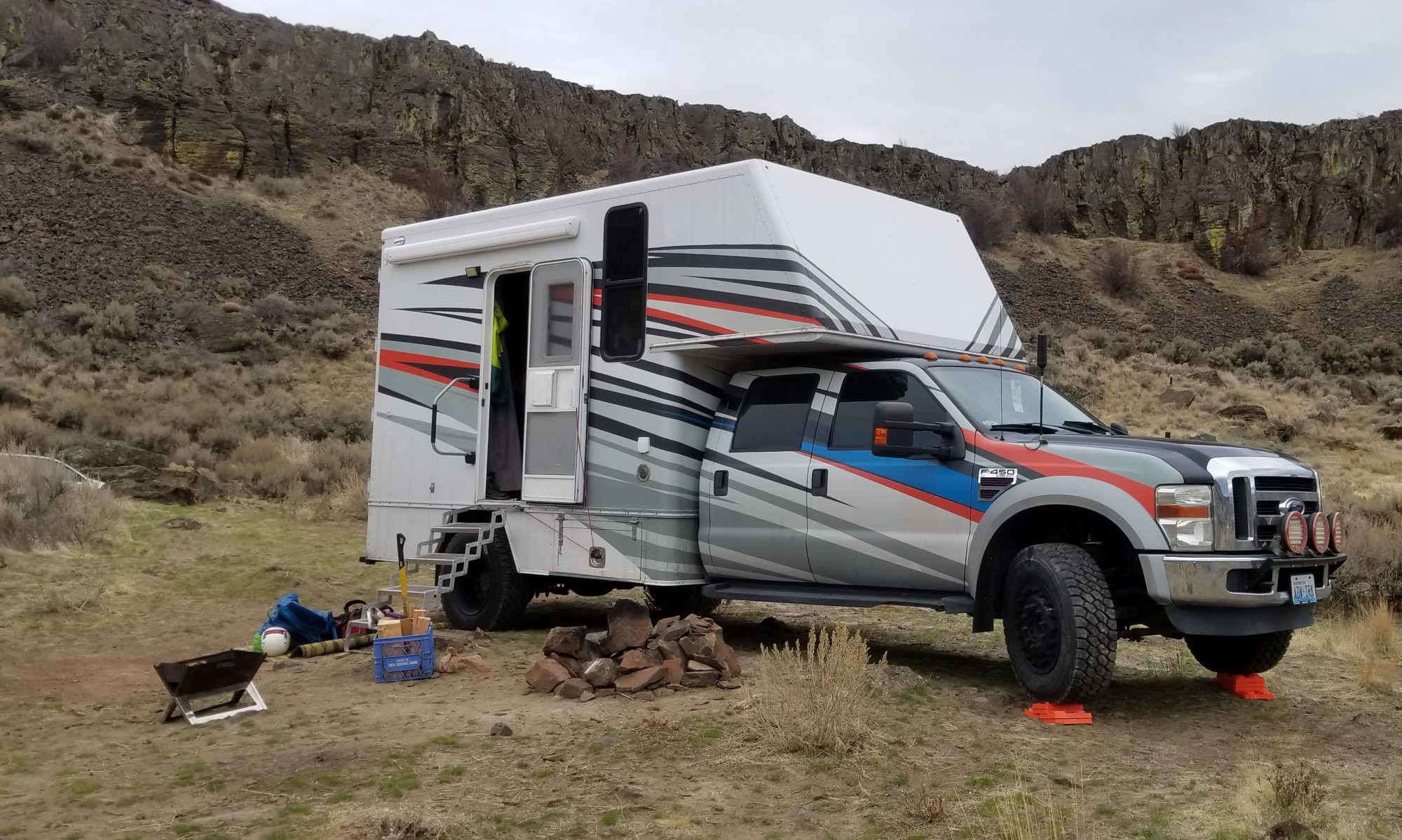Heat is good when its 20 degrees outside. We are using a Webasto Airtop st3500, its a diesel or kerosene forced air heater, very efficient, doesn’t suck down power like RV furnaces do, and quite compact. Its 3500W or almost 12k BTU’s, I was worried this wouldn’t be enough, we were coming from a 40k btu propane furnace in the last truck, turns out its too much!
A couple quirks on these, they soot up at altitude on diesel, they are designed for boats and trucks, not really to be used in ski parking lots. But running them on kerosene makes it an almost non issue. Secondly the fuel pump is basically a metering pump, its a solenoid that pushes a little bit of fuel at set intervals. This means it clicks, loudly, its a pretty common complaint with these heaters. We mounted ours with a rubber quick fist clamp, and used rubber lines to connect to it, but you can still hear it.

The heater is installed under the dinette bench. It fits well as its quite small, and there is room under the truck body there for the intake and exhaust. They go straight out the bottom. Cutting the floor out turned out to be quite the challenge however.

The floor is 3/16 steel and a lot of bed liner, its was very hard to cut. The heater needs an oval shape for the intake, exhaust and the fuel line.
Most people with diesel vehicles will simply use their gas tank to feed the heater, I chose to run a second tank, this allows me to use kerosene for the heat. For the tank I simply used a 3 gallon plastic boat tank. Its housed behind the tail lights on the drivers side. I used rubber fuel injection line to run from the heater all the way to the back.

For the first trip the tank was just strapped to the rear bumper, it was giving me all kinds of trouble. I was not able to get the fuel pump to draw out of the tank. It turns out that the fuel line pickup inside the tank had a large enough diameter that the little fuel pump couldn’t get a prime.

So after taking it all apart I was able to heat and squeeze a piece of 3/16 fuel line onto the tank fitting. It works!
Fuel pump was mounted to the spacer between the body and frame. I used the P-Clamp mount that came with the pump originally, but it was really loud. So I found a Quick Grip clamp I had in the garage and wa la, rubber mounting. The heater manufacturer now sells one that is very similar!

With the fuel worked out, I let the heater run for a couple hours. It took a LONG time to get fuel moved the 15′ from the tank to the heater, but once the fuel got there it kicked right on and blew hot air!
So I needed to get the exhaust and intakes done. Exhaust needs to be run to the outside of the body, I don’t want it just dumping underneath although it would likely be fine. The exhaust uses a flexible stainless pipe, I ran it out just in front of the tool box on the drivers side. Its just about invisible.

The intake just needed to be able to get fresh air and not suck in water, so I made up an elbow using a copper pipe 45 degree fitting a hose clamp and some screen to keep bugs and critters out. Easy and free.

I made up a couple quick brackets to hold the tank. The attach to the bottom of the box and will hold a plywood floor for the tank.

And all installed. The bungee holds it quite securely.

I got a simple heat only thermostat. Runs the furnace well. The issue is its too big! I would likely have been just fine with the 2000W version. The heater kick on and when it hits temp it runs a cool down cycle on the burner which drives the heat up further! I guess its better than being cold. I really didn’t know what it would take, but this one must be far better insulated than our old RV.
EDIT to add that someone from Webasto contacted me, they suggest you use the proper fuel line. Its part of the fuel flow regulation I guess. So I did swap all mine out to the correct stuff afterwards.
